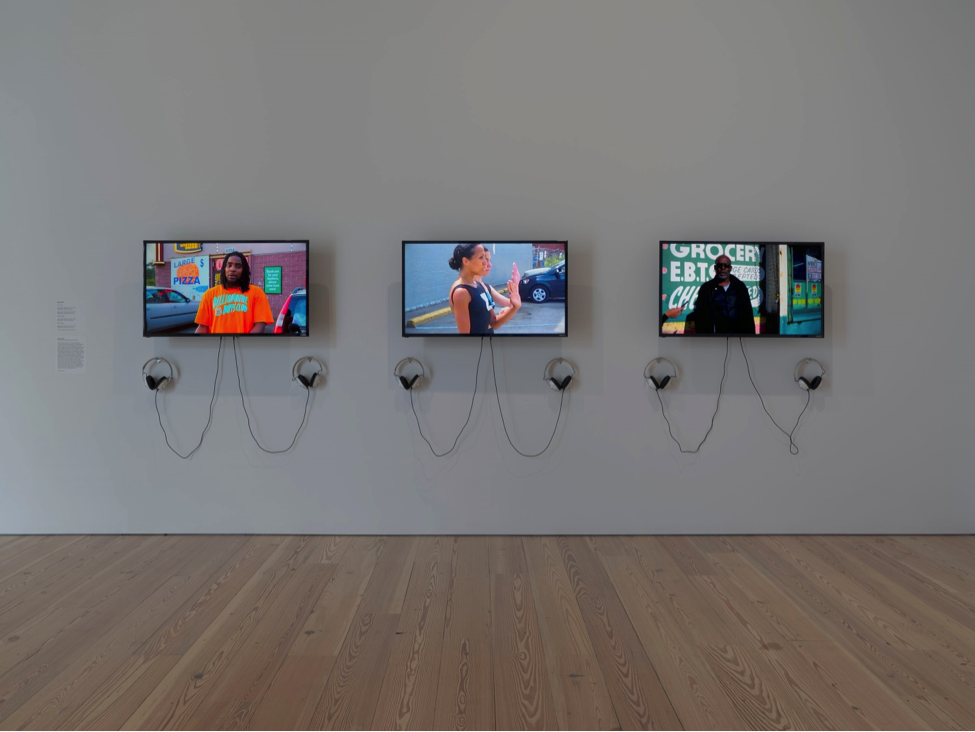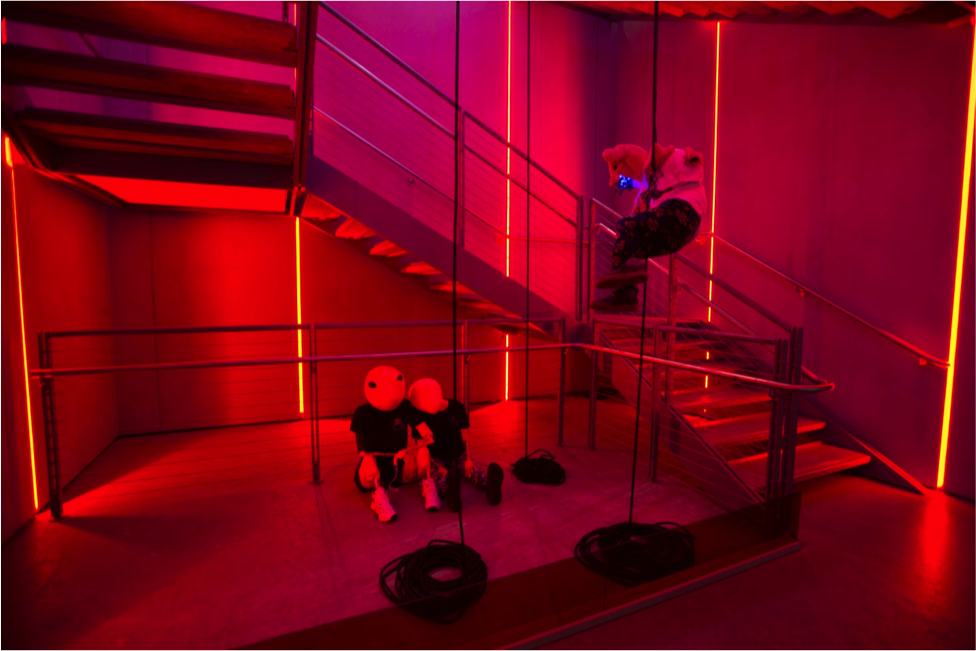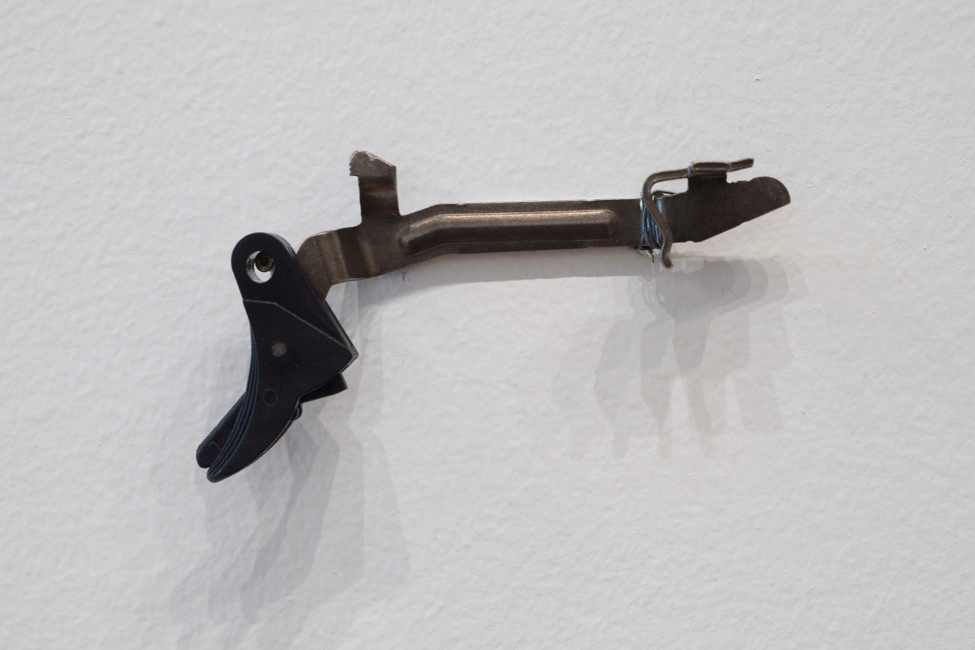Reflecting on the 2017 Biennial
Jul 5, 2017
As the 2017 Biennial draws to a close, I reflect on some works that played with mundane, routine, and seemingly unremarkable staples of life in the United States, revealing national characteristics many Americans may not otherwise consider notable or peculiar.
Maya Stovall’s Liquor Store Theatre series, 2014-2016, spotlighted the multifunctional use of a liquor store in her home city Detroit, reinterpreting its sidewalk and parking lot as a theater for dance performance.
The juvenile figures in Ajay Kurian’s Childermass, 2017, outfitted in branded sneakers and graphic T-shirts with heads suggestive of children’s toys, rendered contemporary American cultural references as seeming artifacts or fossils.
Puppies Puppies’s Trigger (Glock 22), 2017 disassembled the mechanisms of a weapon at the center of current Constitution-based debates, pointing to the relationship between fatal objects and historical ideologies.
History also made less subtle appearances. Dana Schutz’s oil painting, Open Casket, 2016, abstracted the funeral photo of Emmett Till, a 14-year-old African-American boy who was tortured and murdered in 1955 after a white woman, Carolyn Bryant, accused Till of flirting with her. Till’s mother, Mamie Till, insisted on an open casket funeral to, in her words, “let the people see what I’ve seen.”
White artist Dana Schutz’s choice to depict and abstract an image of black death drew criticism, protests, and discussion across social media, news outlets, art publications, and museums. When some came to Schutz’s defense, arguing for artistic freedom, counterarguments challenged notions at the root of another staple of American life: demographic-specific language and critique being met with seemingly pragmatic rebuttals that claim to defend and protect everyone’s freedom. But who is “everyone” in a country built and operating on exclusionary, systemic, and often deadly social hierarchies? Who defines “freedom” of anything in a country in which this concept has been so many different things to so many different people?
Together, the aforementioned works suggest ways past and present actions and ideologies do not simply come and go, but endure. In community structures, culture, infrastructure, yesterday’s beliefs, and social practices, injustices persist. In short, the past is present. The future is defined by how we deal with this.
Justin Allen, Assistant to Access and Community Programs



